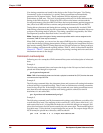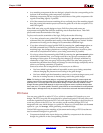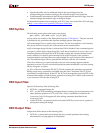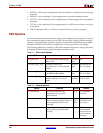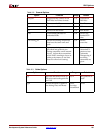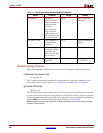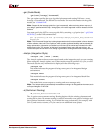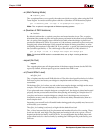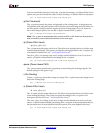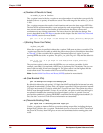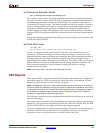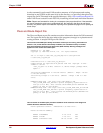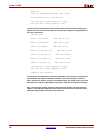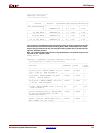
170 www.xilinx.com Development System Reference Guide
Chapter 9: PAR
R
–m (Multi-Tasking Mode)
–m nodefile_name
The –m option allows you to specify the nodes on which to run jobs when using the PAR
Turns Engine. You must use this option with the -n (Number of PAR Iterations) option.
par -m nodefile_name -ol high -n 10 mydesign.ncd output.dir
Note: The –m option is not supported on Windows operating systems.
–n (Number of PAR Iterations)
–n iterations
By default (without the –n option), one place and route iteration is run. The –n option
determines the number of place and route passes performed at the effort level specified by
the –ol option. Each iteration uses a different cost table when the design is placed and
produces a different NCD file. If you enter -n 0, the software continues to place and route,
stopping only when the design is fully routed and meets all timing constraints, or after
completing the iteration of cost table 100. If you specify a –t option, the iterations begin at
the cost table specified by –t. The valid range of the cost table is 0–100; default is 1.
par -pl high -rl std -n 5 design.ncd output.dir design.pcf
Note: For the best MPPR results in a reasonable time, use –pl high –rl std to get the best
placement.
–nopad (No Pad)
–nopad
The –nopad option turns off the generation of the three output formats for the PAD file
report. By default, all three report types are created when PAR is run.
–ol (Overall Effort Level)
–ol effort_level
The –ol option sets the overall PAR effort level. The effort level specifies the level of effort
PAR uses to place and route your design to completion and to achieve your timing
constraints.
Of the three effort_level values, use std on the least complex design, and high on the most
complex. The level is not an absolute; it shows instead relative effort.
If you place and route a simple design at a complex level, the design is placed and routed
properly, but the process takes more time than placing and routing at a simpler level. If
you place and route a complex design at a simple level, the design may not route to
completion or may route less completely (or with worse delay characteristics) than at a
more complex level.
Increasing your overall level will enable harder timing goals to be possibly met, however it
will increase your runtime.
The effort_level setting is std, med, or high with the default level std.
The –ol level sets an effort level for placement and another effort level for routing. These
levels are also std, med, high. The placement and routing levels set at a given –ol level
depend on the device family in the NCD file. You can determine the default placer and
router effort levels for a device family by reading the PAR Report file produced by your
PAR run.



